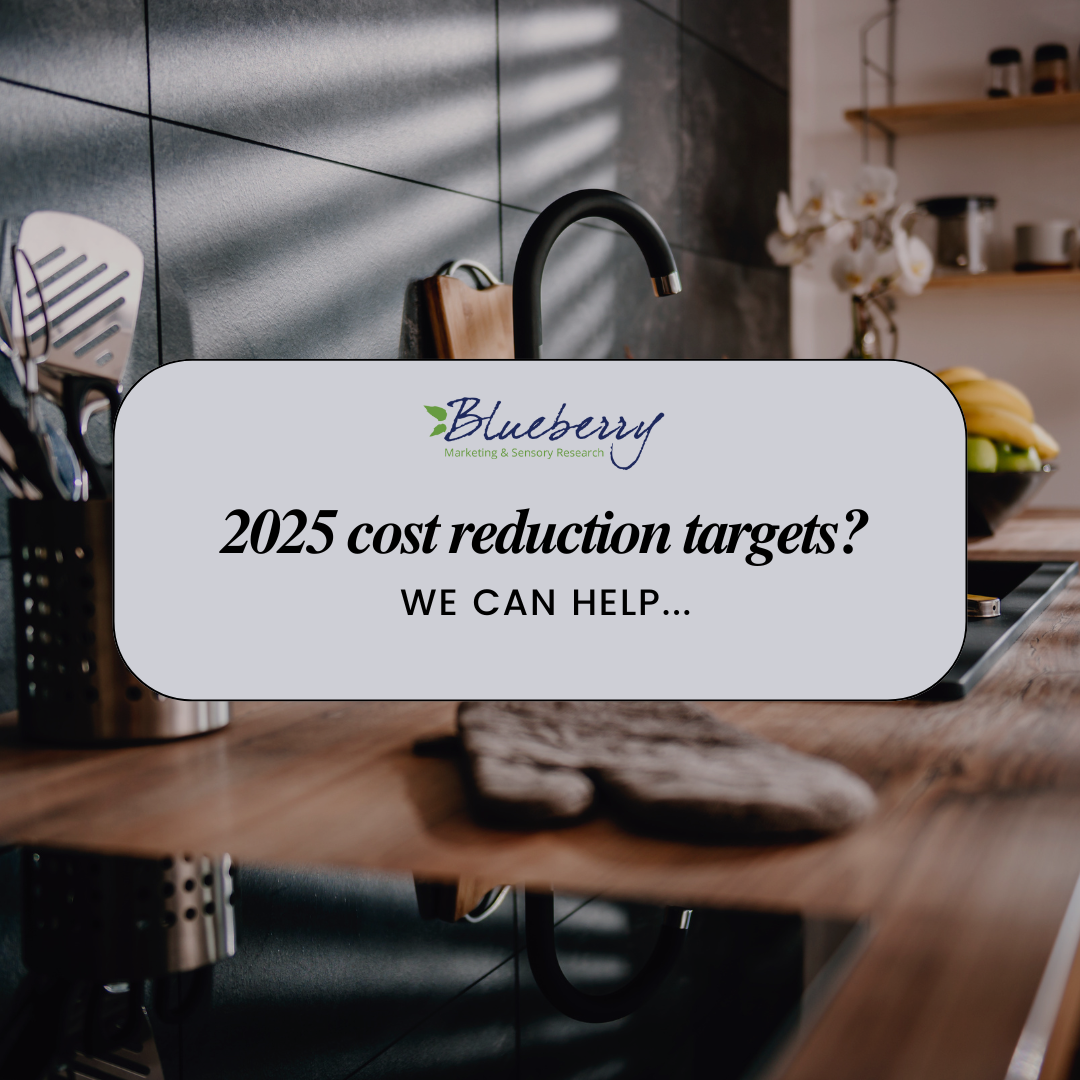
Welcome to 2025! Has your team received this year's cost-reduction targets yet? Value-engineering is part of most companies' business plans and budget targets. Of course, these cuts in costs cannot sacrifice any part of the consumer experience. Consumer research is necessary to prove that the work completed to save costs will not result in a drop in sales.
1. Define action standards. At its core, validating cost-engineering projects with consumers is an alienation test. We want to make sure current users continue to accept the product after the changes are made. When running an alienation test, it is important to define the action standards for success and establish these targets before testing begins. Action standards are the criteria upon which the success of a project is determined. Common action standards include:
- Parity to or Better than Control on overall liking, purchase intent, meeting expectations, and preference.
- Key Question: "If the current product you use is no longer available, would you purchase this product in its place?"
- Other red flags or data cuts may be needed to fully validate the protype, depending on the size of the business and the unique qualities of the product itself.
While a differentiation test could be used, this method is not always ideal. Perhaps consumers notice a difference between the products - but don't necessarily mind the changes or even prefer them!
2. Careful screening for current users of the product
Another important part of alienation studies is to screen for and recruit the right study population. It is best to use data to determine the ideal consumer.We ask questions like: Do your key users skew younger or older in age? Is there an extremely important geographical market that needs to be included? What is the typical purchase frequency of the product, and what is the purchase frequency for heavier users?
These are just examples of important questions we might ask to better understand the answers to when designing your value-engineering consumer research. We always advise to skew toward heavier users in this type of research. Having a strong read on this group provides confidence in the data and decisions made from it.
3. Pre-screen your prototypes to set yourself up for success
It's easy to get "too close" to a product when you're working with it day-in and day-out. Changes that are big for you might be small to others who do not share the same intimate familiarity with the product.
We always suggest to map out the characteristics of your prototypes to better understand what the differences are. This will help you anticipate results and recognize when you are ready to test with consumers. If you have many prototypes and aren't sure which to move forward to large-scale consumer testing, a smaller pre-screening test can be completed to help narrow down the options.
4. HUT or CLT?
There are various types of consumer test methods that can be used when looking for areas of cost reduction. The most common quantitative test types are Home Use Tests (HUTs) and Central Location Tests (CLTs). Each serves a different purpose, and either can be used for alienation studies.
At Blueberry, we advise where possible to complete a HUT for alienation testing. HUTs provide consumers with the opportunity for extended and typical use of the product, versus the prescribed, controlled environment of a CLT.
HUTs require more product than CLTs. If you are short on prototype amounts, a CLT may be your only option. Your results are still valid with a CLT, but we recommend HUTs for this particular type of work.
While value-engineering is not the most glamorous part of research and development, it is an important function for the business to deliver on. These tips should help you begin your research journey.
Contact us to talk more about cost-reduction consumer research and kick off your project today!
